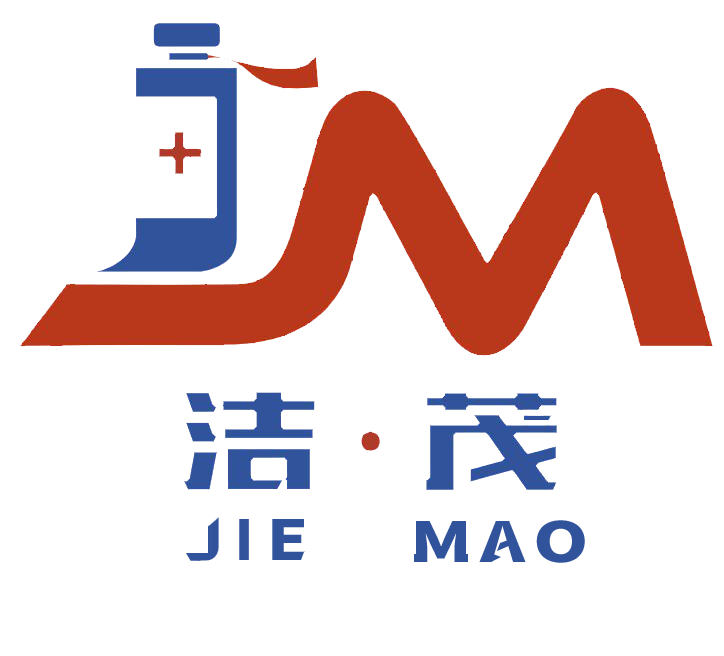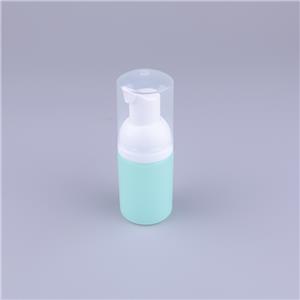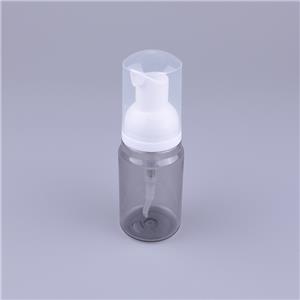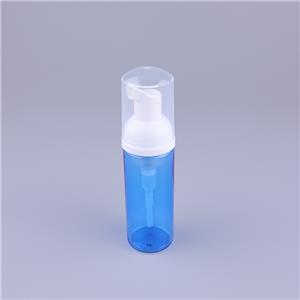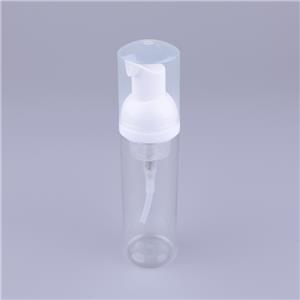- Home
- >
- News
- >
- Public Information
- >
- Nasal Spray Bottle
Nasal Spray Bottle
Nasal Spray Bottle
In modern medical and daily health management, nasal spray bottles, as a precision container specifically used for nasal administration or care, have become an important tool for maintaining nasal health due to their convenience, precision, and efficiency. From the medicinal spray for relieving nasal congestion to the nursing spray for nourishing the nasal cavity, nasal spray bottle plays an irreplaceable role in medical treatment, health care and other fields with its unique design and function. With the increasing emphasis on nasal health, the technology of nasal spray bottles continues to innovate, with safer and more environmentally friendly materials and increasingly widespread application scenarios.
1、 Structure composition and working principle
The structure of a nasal spray bottle may seem simple, but it is actually the result of multiple precision components working together. Its reasonable design directly affects the effectiveness of use and drug absorption efficiency.
(1) Core structural components
The nasal spray bottle mainly consists of four parts: bottle body, nozzle assembly, pump body, and bottle cap. As a container for storing medicinal or nursing liquids, the bottle body is usually made of transparent or semi transparent material, which facilitates users to observe the remaining liquid volume. The capacity varies depending on the purpose, with medical nasal spray bottles typically having a capacity of 10-30ml, while daily care nasal spray bottles may have a larger capacity, reaching over 50ml.
The nozzle assembly is a critical part of the nasal spray bottle, consisting of the nozzle, nozzle housing, and tubing. The design of nozzle is particularly important. Its aperture size and shape directly determine the particle size of spray, spray angle and coverage. High quality nozzles can atomize liquids into small particles with a diameter of 10-100 microns, ensuring that drugs or care solutions are evenly distributed on the nasal mucosa and improving absorption efficiency. The nozzle shell plays a role in protecting the nozzle and controlling the pressing force. Some products also have anti slip patterns designed on the shell for easy grip and operation by users. One end of the conduit is connected to the pump body, and the other end penetrates deep into the bottom of the bottle for extracting liquid.
The pump body is the power core of the nasal spray bottle to realize the spray function, which is composed of piston, spring, valve and other components. When the nozzle is pressed, the piston moves downward, compresses the spring, increases the pressure inside the pump body, opens the valve, and the liquid enters the nozzle through the conduit under pressure, and finally sprays out from the nozzle. After loosening the nozzle, the spring returns, the piston moves upward, the pump body forms negative pressure, the valve closes, and the liquid is sucked into the pump body from the bottle body, preparing for the next spray.
The main function of a bottle cap is to protect the nozzle from contamination and damage, while also preventing liquid leakage. Some nasal spray bottle caps will also be designed with anti-theft structures to ensure the safety of the product in an unopened state.
(2) Working principle
The operation of nasal spray bottle is based on the principles of pressure difference and fluid mechanics. When the user presses the nozzle, the space inside the pump is compressed, and the internal pressure rapidly increases, exceeding the external atmospheric pressure. Under the pressure difference, the liquid inside the bottle is forced into the pump body through the conduit and then flows through the nozzle of the nozzle. The special structure inside the nozzle (such as flow channels, micropores, etc.) causes the liquid to undergo shear and atomization during high-speed flow, forming small droplets that are sprayed out.
Different types of nasal spray bottles have different spray methods and effects. The quantitative nasal spray bottle precisely controls the volume of the pump body, and can spray a fixed dose of liquid with each press, ensuring the accuracy of the dosage, which is particularly important in the medical field. Non quantitative nasal spray bottle can adjust the amount of spray by controlling the pressing force and time according to the user's needs, which is suitable for daily nasal care.
2、 Material selection and performance requirements
Nasal spray bottles come into direct contact with the human nasal cavity and are commonly used to contain drugs or care solutions, therefore they have extremely high requirements for material safety, stability, and compatibility. At present, the main materials for nasal spray bottles include plastic, glass, etc., each with its own characteristics and applicable scenarios.
(1) Plastic material
Plastic is the most commonly used material for nasal spray bottles, mainly including polyethylene (PE), polypropylene (PP), polyethylene terephthalate (PET), etc.
Polyethylene (PE) has good flexibility and chemical stability, excellent low-temperature resistance, and is non-toxic and odorless, meeting the safety standards for food and drug packaging. The PE material nasal spray bottle has a soft touch and is not easily broken, making it suitable for children and the elderly to use. But its barrier performance is relatively poor, with weak ability to block oxygen and water vapor, so it is not suitable for containing drugs that are easily oxidized or volatile.
Polypropylene (PP) has higher hardness and rigidity than PE, better heat resistance, and can be used at temperatures around 100 ℃, making it convenient for high-temperature disinfection. The chemical stability of PP material is strong, and it is not easy to react with the drug solution, which can ensure the stability of the drug. Meanwhile, PP has better barrier properties than PE and is suitable for packaging various medicinal liquids. However, the transparency of PP material is low, which is not conducive to observing the state of the liquid inside the bottle.
Polyethylene terephthalate (PET) has excellent transparency and glossiness, which can clearly display the color and clarity of the liquid inside the bottle, enhancing the visual effect of the product. PET has excellent barrier properties and strong ability to block oxygen, carbon dioxide, and water vapor, which can effectively extend the shelf life of medicinal solutions. In addition, PET material is lightweight, strong, and not easily deformed, making it suitable for large-scale production and transportation. However, PET has poor heat resistance and cannot be sterilized at high temperatures, which limits its application in some medical scenarios that require disinfection.
(2) Glass material
Glass material has the advantages of excellent chemical stability, no reaction with medication, and strong barrier properties, which can maximize the purity and stability of medication. Therefore, it is still used in high-end medical nasal spray bottles. The glass nose spray bottle has high transparency, making it easy to observe the liquid state, and can be sterilized at high temperatures to meet strict hygiene requirements.
However, glass materials also have obvious disadvantages, such as heavy weight, fragility, increased risks during transportation and use, and high production costs, so they are less commonly used in daily care nasal spray bottles. In order to compensate for the fragility of glass, some glass nose spray bottles will undergo surface strengthening treatment or be equipped with plastic protective covers.
(3) Material performance requirements
Regardless of the material used, nasal spray bottles must meet the following performance requirements: Firstly, safety is the primary consideration, and the material must be non-toxic, odorless, and comply with national food and drug packaging material standards to avoid harm to the human body. Secondly, it has good chemical stability and can be compatible with the medicine or care solution it contains. It does not undergo chemical reactions or release harmful substances, ensuring stable product quality. Again, the barrier performance should meet the usage requirements, preventing liquid evaporation, leakage, or external pollutants (such as oxygen, moisture, microorganisms, etc.) from entering the bottle, which can affect the effectiveness and safety of the product. Finally, the physical performance should meet the standard, such as having certain strength and toughness, and being able to withstand external forces such as compression and collision during normal use.
3、 Production process and quality control
The production process of nasal spray bottles is complex, with extremely high requirements for accuracy and hygiene. It requires strict control in multiple stages to ensure that the product quality meets the standards.
(1) Main production processes
The production process of nasal spray bottles varies due to different materials. Plastic nasal spray bottles mainly use injection molding and blow molding processes, while glass nasal spray bottles use glass blowing processes.
Injection molding is the main production method for precision components such as plastic nose spray bottle nozzle components and pump bodies. After heating and melting the plastic particles, they are injected into a precision mold through an injection molding machine, cooled and solidified to obtain the desired shape of the component. Injection molding can ensure the dimensional accuracy and surface quality of components, ensuring a tight fit between each component. During the injection molding process, it is necessary to precisely control parameters such as temperature, pressure, and injection speed to avoid defects such as material shortage, flash, and bubbles.
Blow molding is mainly used for producing plastic bottle bodies. Place the melted plastic preform into the mold, introduce compressed air to expand the preform and tightly adhere to the inner wall of the mold. After cooling, a hollow bottle body is formed. Blow molding can be divided into extrusion blow molding and injection blow molding. Extrusion blow molding is suitable for producing large capacity, simple shaped bottles, while injection blow molding can produce bottles with higher precision and smoother surfaces, suitable for products with higher requirements for appearance and performance.
The production of glass nose spray bottles adopts glass blowing technology, which manually or mechanically blows molten glass into the desired shape of the bottle body. During the blowing process, parameters such as temperature, blowing pressure, and time of the glass liquid directly affect the quality and dimensional accuracy of the bottle body. After the glass bottle body is formed, annealing treatment is also required to eliminate internal stress and improve the strength and stability of the glass.
After the production of each component is completed, assembly is required. The assembly process is carried out in a clean workshop to ensure environmental hygiene standards and avoid pollution. The assembled nasal spray bottle also needs to be cleaned, disinfected, and other treatments to remove surface oil stains, dust, and microorganisms.
(2) Strict quality control
The quality control of nasal spray bottles runs through the entire production process, from raw material inspection to finished product testing, with strict standards in every link.
Raw material inspection is the first step in quality control, which involves strict testing of plastic particles, glass raw materials, etc. to ensure that their physical properties, chemical properties, and hygiene indicators meet the requirements. For example, plastic particles need to be tested for their melt flow rate, tensile strength, chemical resistance, and other indicators; Glass raw materials need to be tested for their chemical composition, heat resistance, etc.
Real time monitoring and sampling inspection of each process in the production process. The injection molding and blow molding processes should regularly inspect the size, appearance, and performance of the product, such as the uniformity of the bottle wall thickness and the sealing of the nozzle. During assembly, check the assembly accuracy of each component to ensure that the nozzle is pressed smoothly and the spray effect is good.
Finished product inspection is the last checkpoint of quality control, mainly including the following items: appearance inspection, checking whether the bottle body and nozzle have defects such as damage, scratches, deformation, etc; Sealing test, using negative pressure method or positive pressure method to detect whether the nasal spray bottle leaks; Spray performance test, test spray shape, particle size distribution, spray volume, spray angle and other parameters to ensure that the design requirements are met; Aseptic testing is required for medical nasal spray bottles to ensure that the product does not contain microorganisms; In addition, compatibility testing is required to test the stability of the medication and any changes in the material of the nasal spray bottle after it has been in contact with the contained medication or care solution for a period of time, to ensure compatibility between the two.
Only nasal spray bottles that have passed all testing items can be sold at the factory, providing consumers with safe and reliable products.
4、 Application scenarios and product classification
The application scenarios of nasal spray bottles are extensive, covering multiple fields such as medical care, daily care, outdoor protection, etc. Nasal spray bottle products in different scenarios also have differences in functionality and design.
(1) Medical field
In the medical field, nasal spray bottles are an important tool for nasal administration and are widely used to treat diseases such as allergic rhinitis, acute and chronic rhinitis, sinusitis, etc. Common medicinal nasal spray bottles include corticosteroid nasal spray (such as budesonide nasal spray), antihistamine nasal spray (such as azoospermine nasal spray), decongestant nasal spray (such as oxymetazoline nasal spray), etc.
These nasal spray bottles are mostly designed for quantitative spray, which can accurately control the dosage of each dose, ensure the effective concentration of drugs in the nasal cavity, and improve the treatment effect. At the same time, the nozzle design of the medicinal nasal spray bottle conforms to ergonomics and can penetrate into the appropriate position of the nasal cavity, allowing the drug to directly act on the affected area and reducing systemic side effects. For example, corticosteroid nasal spray is administered through nasal spray, and the drug directly acts on the nasal mucosa, resulting in low systemic absorption and high safety.
(2) Daily nasal care
With the increasing awareness of people's health, daily nasal care is receiving more and more attention, and the application of nasal spray bottles in this field is also becoming increasingly widespread. The nasal spray bottle for daily care is mainly used to clean the nasal cavity and moisten the nasal mucosa. It is suitable for nasal care in dry climates, air pollution and other environments, as well as auxiliary care for patients with rhinitis.
This kind of nasal spray bottle usually contains physiological saline, seawater spray, etc. The spray is mild, can effectively remove dirt, dust, allergens, etc. in the nasal cavity, and keep the nasal cavity clean and moist. Some nursing nasal spray bottles also add nutrients such as vitamins and minerals to nourish the nasal mucosa.
(3) Outdoor and Special Environmental Protection
In outdoor or special environments, nasal spray bottles can be used to protect the nasal cavity from external stimuli. For example, in places with more dust, such as construction sites and mines, the use of nasal spray containing moisturizing ingredients can form a protective film on the surface of the nasal mucosa to reduce the irritation of dust to the nasal cavity; In dry desert areas or air-conditioned rooms, nasal spray bottles can promptly replenish moisture to the nasal cavity, preventing dryness and bleeding of the nasal mucosa. In addition, some nasal spray bottles also contain sunscreen ingredients, which can form a sunscreen barrier in the nasal cavity and reduce the damage of ultraviolet rays to the nasal mucosa.
(4) Product classification
According to their functions and purposes, nasal spray bottles can be divided into medicinal nasal spray bottles and nursing nasal spray bottles. Pharmaceutical nasal spray bottles need to meet the strict standards of drug packaging, usually with quantitative spray function, and are produced by pharmaceutical manufacturers; The nursing nasal spray bottle is relatively flexible, and different formulas and spray effects can be designed according to different nursing needs.
According to the way of spray, nasal spray bottles can be divided into quantitative nasal spray bottles and non quantitative nasal spray bottles. The quantitative nasal spray bottle sprays a fixed amount of liquid with each press, suitable for scenarios that require precise administration; The spray amount of non quantitative nasal spray bottle is controlled according to pressure and time, which is suitable for daily care.
5、 Market Status and Development Trends
With the increasing attention to nasal health, the nasal spray bottle market is showing a steady growth trend, while also facing new opportunities and challenges.
(1) Market situation
At present, the nasal spray bottle market has a wide variety of products, covering multiple fields such as medicine, care, and protection. The competition between internationally renowned brands and domestic brands is fierce, and international brands occupy a certain share in the high-end market with their technological advantages and brand influence; Domestic brands are active in the mid to low end market due to their high cost-effectiveness and proximity to market demand.
From the perspective of consumer groups, patients with allergic rhinitis and sinusitis are the main consumers of medicinal nasal spray bottles; With the increasing attention to air quality issues and the gradual popularization of daily nasal care awareness, the demand for nursing nasal spray bottles among the general population is also constantly increasing, especially in dry areas and cities with severe air pollution, where the sales of nursing nasal spray bottles have grown significantly.
In terms of sales channels, the sales channels for nasal spray bottles are diversified, including hospitals, pharmacies, online e-commerce platforms, etc. Hospitals and pharmacies are the main sales channels for medicinal nasal spray bottles, which consumers can purchase with a prescription; Online e-commerce platforms provide a vast sales space for nursing nasal spray bottles, making it convenient for consumers to purchase anytime, anywhere.
(2) Development Trends
In the future, the nasal spray bottle market will develop in the following directions:
One is intelligence. With the development of IoT technology, intelligent nasal spray bottles will gradually emerge. This type of nasal spray bottle can record information such as usage time, frequency, dosage, etc. through sensors, and transmit the data to a mobile app, making it convenient for users and doctors to grasp the medication situation and improve medication compliance. Some smart nasal spray bottles can also be equipped with reminder functions to remind users to take medication or take care of themselves on time.
The second is environmental protection. Driven by global environmental trends, nasal spray bottles will place greater emphasis on environmental performance. On the one hand, more environmentally friendly materials such as biodegradable plastics and recycled plastics will be used to reduce pollution to the environment; On the other hand, we will optimize the design, improve the recyclability of products, and promote the development of circular economy.
The third is functional diversification. In addition to traditional medication and care functions, nasal spray bottles will develop towards multifunctionality. For example, combined with detection functions, it can quickly detect allergens, bacteria and other indicators in the nasal cavity, providing personalized nasal health advice for users; Develop a compound prescription nasal spray with moisturizing, anti-inflammatory, repair and other effects to meet the comprehensive care needs of users.
The fourth is to design with humanization. In the future, nasal spray bottles will pay more attention to user experience, and optimize their appearance design, grip feel, spray comfort and other aspects. For example, the ergonomic nozzle angle is used to reduce the discomfort of spray; Design anti slip and easy to press nozzles for convenient use by children and the elderly; Launch a small capacity and highly portable nasal spray bottle to meet the needs of users when going out.
As an important nasal care and medication delivery tool, nasal spray bottles play a crucial role in ensuring people's nasal health. With the continuous advancement of technology and changes in market demand, nasal spray bottles will continue to innovate and develop, providing users with safer, more effective, and convenient products. I believe that in the future, nasal spray bottles will play a more important role in nasal health management, safeguarding people's healthy lives.
